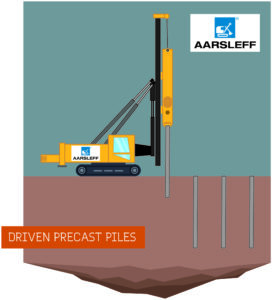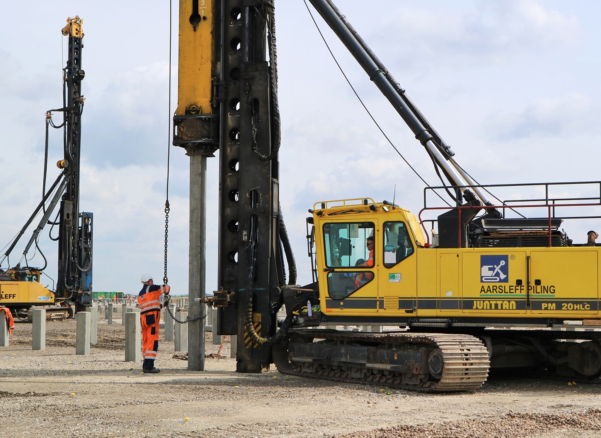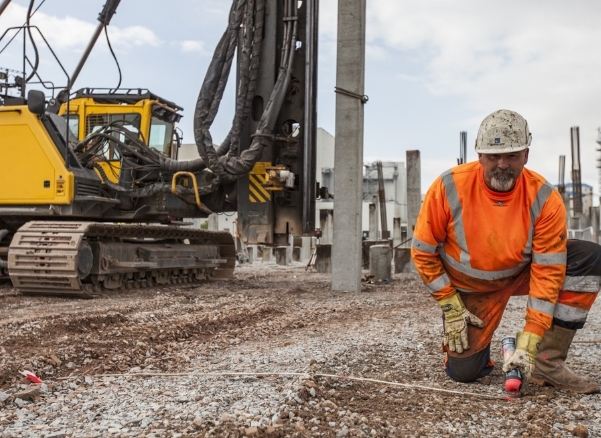What is a driven precast pile?
Categories:
Company News
What is a driven precast pile?
Usually of square section, driven precast piles are produced in short lengths in one metre intervals between 3 and 14 metres. They are precast so that they can be easily connected together in order to reach their required length. This will not decrease the design load capacity. Reinforcement is necessary within the pile to help withstand both handling and driving stresses.
In the process of driving the pile into the ground, soil is moved radially as the pile shaft enters the ground. There may also be a component of movement of the soil in the vertical direction. Read about their advantages here.

How are driven piles installed?
- Rig delivery into site and setup process, to include permit signature, site inspection, platform inspection, internal induction.
- Pile delivery arrival and wagons entering site and sighted next to rig
- Pile unloading, this includes from pile delivery and laying piles down on floor beside pile pin positions. Rig used as a crane for this purpose, you could include methods of unloading on wagons with edge protection etc
- Pitching piles, lifting from the floor with the hammer line and offering piles into the helmet, then aligning pile over the pile position and ensuring the verticality in x and y
- Driving piles, and levelling carrying out lift offs to check position as you go including jointing if required and taking final 3 sets
- Testing of pile
Watch the full driven precast pile installation in our video below:
What are the methods of pile driving?
The different types of pile driving methods are
- Hydraulic hammer
- Air hammer
- Vibrator
- Hydraulic press
Aarsleff’s wholly-owned subsidiary Centrum Pile is proud to be the UK’s leading and most advanced manufacturer of continuously reinforced, precast concrete piles using the most advanced concrete, distribution, mould, pile joint and manufacturing technology available. Centrum precast concrete piles are manufactured using the most advanced technology available, they have a high structural capacity which is achieved from the use of high strength sulphate resisting concrete and exceptionally rigid welded reinforcing cages. This means that the Centrum Pile System can be installed to work at higher concrete stress levels than would be permissible for piles formed in the ground using traditional cast insitu wet concrete.
Over many years the Aarsleff and Centrum Pile team has built up a reputation for expertise and integrity when it comes to providing technically innovative solutions to civil engineering foundation problems. For more information about Aarsleff Ground Engineering or to send in your enquiry, call 01636 611140 and speak to a member of our expert team today, or drop us an email.
The Latest. News, podcasts & projects






